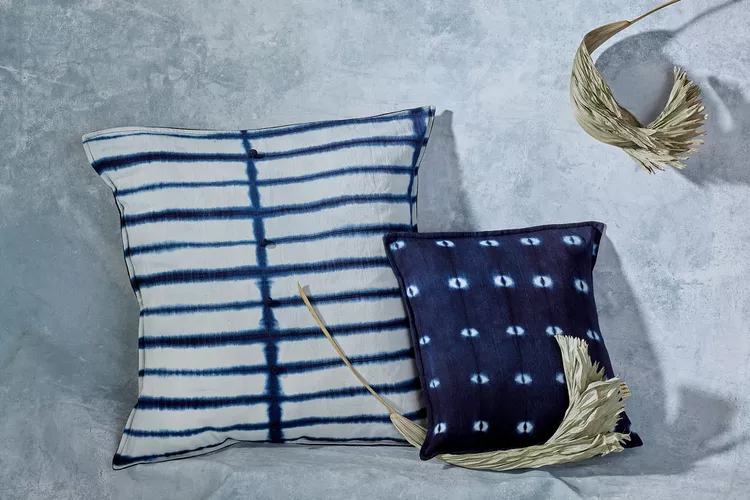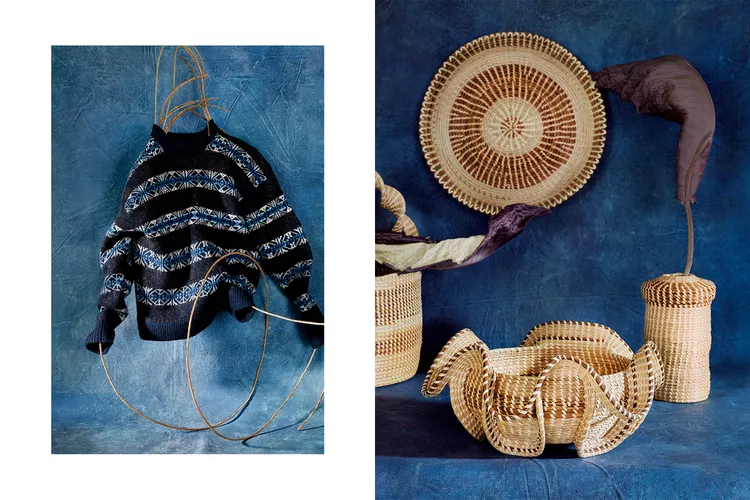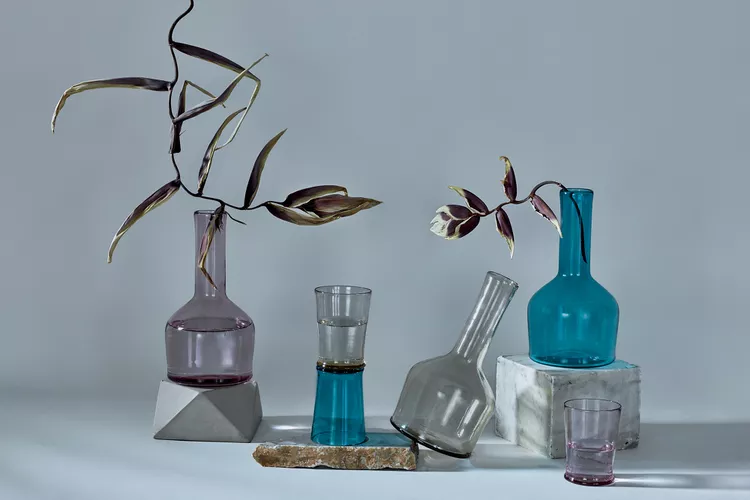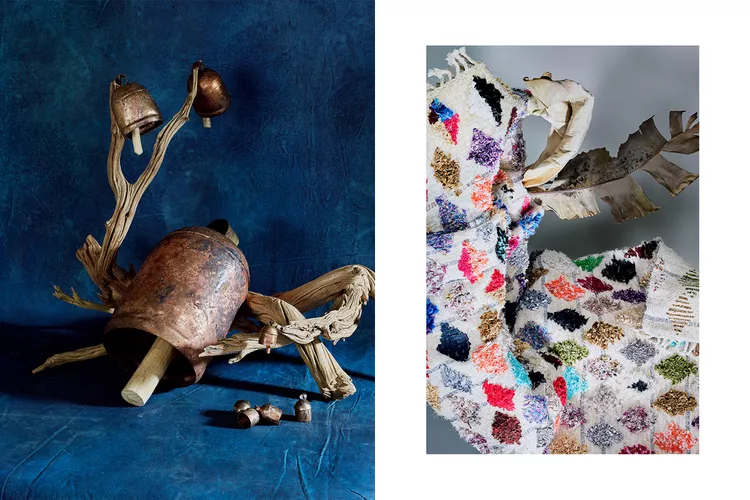exquisite relics imbued with a feeling of place, accompanied with the tales (and histories) that lie hidden within them.
Think of something in your house that was crafted by hand for a moment. It could be a piece of pottery, a blanket that was woven by hand, or a bowl that was fashioned out of wood. That thing conceals a lengthy and eventful history that lies dormant within it. Even if the object in your mind's eye is a misshapen cup fashioned by your seven-year-old, that simple thing is a repository of tradition and expertise that has been transferred from maker to maker through decades, finally landing in the hands of the art instructor who teaches your child.
However, if the item was something that you purchased while travelling, it is very likely that it is also a manifestation of the soul of a community. It is a physical embodiment of a way of life, a set of beliefs, a relationship to the landscape, and even of political and social history. If the item was something that you purchased while travelling, it is very likely that it was something that you purchased while travelling. When we are drawn to an object from a specific location, such as a teacup from Kyoto, a sweetgrass basket from the South Carolina Lowcountry, or a rag rug from the Atlas Mountains of Morocco, we are responding in part to the potent feeling of place that the object contains.
This long, backwards-looking (and forwards-reaching) journey, which is one that an object must traverse in order to become itself, not only endows an item with meaning but also serves as the ember that maintains the life of endangered cultural practises. Supporting local handicrafts can have a significant impact on the way our future unfolds, whether of whether you're travelling to far-flung regions or relaxing on the couch with your laptop. That's what I call purchasing without any remorse.

Guatemalan weavers working at looms
In the hilly region of north-central Guatemala known as Alta Verapaz, Q'eqchi' women weavers utilise a type of loom that is secured in place by a strap wrapped around their back and relies on body weight to keep the warp tight. Although this technique was developed more than 2,000 years ago, the members of Ixbalam'ke, a collective that is directed by Amalia Gue, are keeping up with the times by manufacturing delicate clothing such as shawls and shirts made of gauzy fabric.
Nonetheless, the core of their business is an enduring product. The loom enables the weaver to construct panels that are hip-width in size. These panels are then sewn together to form a huipil, which is a large, boxy shirt-dress that Mayan women across Central America have traditionally worn. Ixbalam'ke employs natural dyes obtained from plants to create an enticing colour scheme for its collections, which includes shades of blue, pink, grey, and brown. Despite their lack of complexity, the production of these clothing takes several months. This is far longer than the time required to produce garments by several so-called "luxury" labels, which are not available at this price. To place an order, send a direct message to @amalia gue on Instagram or send an email to [email protected].
The Japanese art of pottery
When I first encountered Matsubayashi Hossain XVI in the city of Uji, which is located close to Kyoto, he had just lately given up his given name in order to take on his hereditary title. Asahiyaki, the ceramic business owned by his family, was established by Hosai I in 1640 and has been passed down through 16 generations of the Hosai family, from father to son, Hosai to Hosai.
Matsubayashi shared with me his first apprehension at the prospect of inheriting something as ancient as the "method of tea," often known as the Japanese tea ceremony. Then, during one night while he was by himself at the base of the enormous noborigama kiln, he had the sensation of his former self vanishing, and he became one with those who came before him as well as those who will come after him.
Clay has been extracted from the Uji River watershed for the past 400 years and allowed to mature for another 50 before being used. Hosai XVI employs the same beautiful blue straw-ash glaze that his forefathers used, and he fuels the same big kiln with pine. The clay for these works was mined by Hosai XVI's ancestors. This series, which is part of the Hosai XVI collection, makes use of a luxurious gold, yet does so without sacrificing the vessels' fundamental modesty. Moreover, Asahiyaki offers more simplistic pieces in addition to tea accoutrements.

Dyeing in Mali
A few years ago, I met the textile artist Assata Namoko at the annual International Folk Art Market, which is held in Santa Fe. At the time, I was admiring the bright work of Djiguiyaso, which is her cooperative in the city of Bamako, which is the capital of Mali. She spoke to me in French that was easy for me to understand and told me about the traditional crafts that Mali is famous for, such indigo tie-dying, which has been practised there for over 3,000 years, and bogolan fabrics, whose earthy colours derive from fermented mud. Since the 1980s, when synthetic fabrics and machine-made patterns became increasingly widespread, she explained, both have been on the brink of extinction ever since then.
Fun to be had today teaching Y2 @FalmouthUni about the origins of #couture in the fashion industry and the kind of artisanal practices that designers like Worth supported. Early #1890s formal frocks by the man himself @metmuseum #fashionhistory pic.twitter.com/SmJCjAhSwM
— Dr Kate Strasdin (@kateStrasdin) January 31, 2020
In the year 2004, Namoko became involved. More than one hundred women are employed by the Djiguiyaso Cooperative to manufacture items (cushions, dresses, blouses, and bedcovers) that combine bogolan with traditional tie-dye techniques. She also established a centre to teach women crafts such as spinning, dying, and sewing with the goal of assisting women in their move into the workforce while simultaneously revitalising generational knowledge and maintaining a connection to its roots. Her original way of thinking has in point of fact made it possible to go back to intensive localisation. Mali is home to a number of enterprises that are responsible for the cultivation, processing, and spinning of organic cotton into yarn. The members of the cooperative then weave the textiles, wash them, and dye them with indigo cultivated in Mali.
Products made by Djiguiyaso can be bought on websites such as Indigo Arts, Minzuu, and So Original, and they can also be purchased in bulk through the Powered by People website.

Knitting is a Scottish tradition.
There are many sweaters made of wool that bear the label "Fair Isle," but the authentic variety can only be found on the remote island in the Shetland Islands that has that name. Shearing, spinning, and knitting are all done on-site, so the finished products can be traced back to the flocks of sheep that graze the area's rugged meadows.
Because of the harsh weather, the craft was initially practised by women who knitted patterned sweaters for their seafaring husbands. These husbands, in turn, frequently bartered these sweaters for necessities along the trade route, thereby introducing the rest of the world to this one-of-a-kind fashion. In the 1980s, the knitters came together to organise a cooperative and register Fair Isle as a trademark, elevating the status of the craft from one of necessity to one of luxury. Mati Ventrillon, a French Venezuelan architect who'd relocated to the island with her husband and child on something of a lark, was a member of the cooperative until it collapsed in 2011, at which point one of its members, Mati Ventrillon, started her own brand in order to continue the tradition.
Her work, some of which incorporate reimagined elements from the 19th century, makes it abundantly evident that Ventrillon has a profound respect for the culture she draws inspiration from. Her work recently drew the attention of Melissa Ventosa Martin, who is headquartered in New York and is a former editor turned curator. Martin is the founder of Old Stone Trade, which is a retailer for upscale handcrafted clothes. The two are working together on a limited-edition collection at the moment.
The art of making baskets in South Carolina
Coiled sweetgrass baskets are a one-of-a-kind exception that can be found in the Lowcountry of South Carolina. Enslaved people in the United States were only able to pass on a very small number of artefacts to their children. The West African ancestors of the Gullah Geechee group in this region were responsible for the production of winnowing baskets, which were used to fan rice on plantations. These baskets were constructed by coiling and sewing native rushes utilising the skills that were brought across the ocean with them. With emancipation, weavers began experimenting with materials such as sweetgrass, pine needles, and palmetto fronds in order to produce designs that were more intricate, so elevating the craft to the level of an art form and providing a source of money.
Lynette Youson, who grew up in the Charleston region, picked up the skill of weaving from observing her great-grandmother when she was a child. She now teaches the craft to her daughters and granddaughters, continuing the family legacy. Her baskets are undeniably works of art, and she has honed her craft to such a degree that one of them is now part of the Smithsonian Institution's permanent collection. Her work is extensive and has been exhibited all over the world. Youson is committed to the conservation of this cultural heritage and frequently conducts seminars for both children and adults from all across the country. She utters the words, "This is my love." You can purchase pieces created by Youson at the Sweetgrass Cultural Arts Pavilion in Mount Pleasant, or you can send an email to [email protected] to place an order directly.

The art of blowing glass in Italy
The art of glassblowing can be traced back to the time of the Roman Empire in Venice. By the 13th century, the craft had become so important to the city's economy that its trade secrets needed to be protected by any means necessary. As a result, all production was moved to the island of Murano, which is located in the Venetian Lagoon, and glassblowers were not allowed to leave the island. Even in modern times, Murano is known worldwide as a hub for the production of glass; as a result, the city has evolved into something of a tourist trap.
Nonetheless, there are certain Venetian families who are dedicated to maintaining the local heritage at a high level, as well as some exceptional designers who collaborate with skilled craftsman. Domitilla Harding, an Anglo-Italian designer and artist who works in partnership with Andrea Zilio, a master based in Murano, creates artworks that are unparalleled by any other.
The two now produce, in addition to one-of-a-kind vessels for exhibition in museums and galleries, a line of decanters called Archivio Lante that are remarkably simple but completely perfect. These decanters were inspired by bottles Harding discovered in the archives of a factory in the town of Empoli, and they come with a matching set of glasses designed in the "osteria-style" format. The glassware is available in a variety of ethereal tones, each of which was meticulously created by Harding herself using a blending of several pigments.

Metalwork in India
Copper bells are traditionally strung around the necks of sheep and animals in rural India. The Kutch district of Gujarat is home to many of the artisans who make these bells. If you've ever travelled through rural India, you've probably heard the jingling of these bells. Kutch, located on India's western coast, is hemmed in on three sides by water and shares a border with what is now Pakistan, the country that is credited with being the birthplace of this metalworking method hundreds of years ago. Patina is achieved by first coating waste metal sheets with a mixture of copper and mud paste, then firing them in a kiln to form the characteristic patina. The scrap metal sheets are pounded by hand to achieve the desired shape and are linked without the need of welding. The bells are pounded with a light touch by the craftsmen in order to produce a variety of sizes and sounds that assist the herders in distinguishing their flock from other flocks and varieties of cattle.
There is still a thriving local economy for this craft, despite the fact that the market for it has shrunk as nomadic lives have increasingly given way to more stable agricultural ways of life. The bells are currently sold all over the world by artisans to individuals who want to incorporate the sound of the Indian countryside into their everyday life. These people hang the bells on their gates and doors, use them as wind chimes, and even put them on the collars of their dogs. The bells can be purchased at Maiwa, a boutique based in Vancouver; the Maiwa Foundation, the social enterprise arm of Maiwa, offers funding for craftsmen in the Global South.
The art of creating rugs in Morocco
In the communities of the Atlas Mountains, Amazigh women have been weaving wool carpets for years. But, rag rugs, which are called boucherouites, which comes from the Arabic word for "torn fabric," are a more recent innovation that occurred almost by accident. Wool was harder to come by and more expensive to buy in the 20th century as a result of the decline of nomadism and herding. This occurred at the same time as a massive influx of secondhand clothes flooding the souks from throw-away economies like our own, which inspired the Amazigh people to make do with scraps, thereby transforming their self-imposed limitations into a vibrant, idiosyncratic, and wildly colourful new form of artistic expression.
Traditional Moroccan rugs feature well-established geometric patterns and motifs, whereas Boucherouite rugs have a more improvised appearance, similar to the improvisational nature of jazz riffs. They are constructed using shredded lengths of cloth on a huge loom, with smaller scraps being hand-knotted to produce a multicoloured fluffy pile for the finished product. When these rugs were first created, their sole purpose was to adorn the floors of the weavers' private residences; they were never intended for commercial sale. Yet as more and more people began to visit, a market eventually developed. This item was crafted by Zhour Ousbigh of the Cooperative Tiglmamin, which is located outside of the city of Khenifra. It is currently available for purchase through the Anou Cooperative, which is a marketplace that is owned and maintained by the artisans. Workshops and meetings with local artisans are also available to tourists at Anou.

